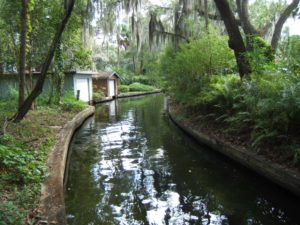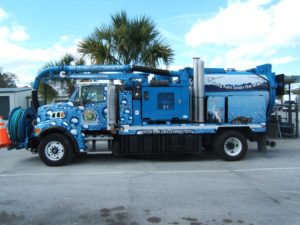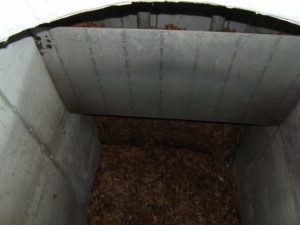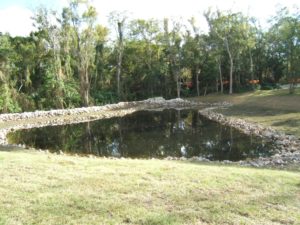How to avoid pointless personal pollution
What is pointless personal pollution? Everything we do can have an impact on our waterways. If we are smart about the way we manage our lawns, utilize pesticides and dispose of potentially harmful wastes, we can ensure that we are not harming our waterways. If, on the other hand, we are careless in these activities and allow lawn debris, fertilizers, oil or pesticides to be washed into our stormwater system, these materials all become pointless personal pollution and will eventually make their way to the lakes we all enjoy. This extra pollutant load to the lakes can result in fish kills, algae blooms and other detrimental impacts to the aquatic ecosystems. The good news is that pointless personal pollution is entirely avoidable and by doing things in a lake friendly way we can actually save ourselves time and money. Residents can help make a positive difference in our lakes by following the best management practices outlined below. Please also keep in mind that if you use a service company for any of these activities, you can insist that they make themselves aware of these issues and follow these practices as well. Help protect our city’s waterways from pollution by placing storm drain markers in your neighborhood!
Geographic Setting
Most of the City of Winter Park lies within what is known as the Howell Branch Drainage Basin. Howell Branch Creek, also known as Howell Creek, is a tributary of the St. Johns River. All of the land area that contributes runoff to Howell Branch is referred to as its drainage basin. There are approximately 17 square miles of land that drain to Howell Branch before it leaves Winter Park. Winter Park alone has over 2,300 stormwater inlets and 46 miles of stormwater pipes.
Aerial photo of the area showing the drainage basin boundaries


Lawn Maintenance
Grass clippings, leaves & other yard debris

During rest of the year, lawn mowing, and vegetation trimming activities contribute to the load of organic material. When clippings are left on paved surfaces, they will, like the oak leaves, wind up in our stormwater system, and eventually in our lakes. This excess of organic material releases large amounts of phosphorus very quickly, fueling unwanted algae growth. Residents can help protect the area’s lakes in the following ways.
- Never blow grass clippings, leaves or other debris into the streets or storm drains. If you use a lawn service, it is very important to make sure they do not blow debris off your property.
- Sweep leaves, lawn clippings and other debris off of sidewalks and driveways.
- Bag leaves, or place in flower beds as mulch, so that they are not easily washed or blown back onto the paved surfaces.
- Keep the curb/gutter area of the street in front of your house clean. The city has street sweepers, but they can’t hit every street every day. During the leaf fall period, a large number of leaves can collect in just one day. If a rainstorm happens before the street sweeper comes by, those leaves will be carried to the nearest lake.
Fertilizer & Pesticide Use
Natural materials like leaves and grass clippings are not the only threats to water quality in our lakes. Lawn care and home pest control products can enter our lakes if they are not used properly and carefully. Many weed killers and insecticides are extremely toxic to aquatic life. Always follow the label directions when using any pesticide, and never use pesticides within thirty feet of a lake, ditch or stream. Check weather forecasts before applying any outdoor pesticides, and refrain from using them if windy conditions exist, or if rain is expected within 24 to 48 hours. Clean up any spills immediately, and always dispose of unwanted pesticides at an approved household hazardous waste facility (see additional information below).
Fertilizers are used to help our lawns and shrubs grow, but the very compounds that help our landscapes, can cause excessive plant and algae growth in our lakes. Florida soils hold phosphorus very well, and rarely need any to be added. As of August 2020, the City of Winter Park has adopted the Orange County Fertilizer Ordinance – located in the city’s ordinance section 58-368. Orange County’s fertilizer ordinance requires the use of phosphorus-free fertilizer, time-released nitrogen and spray shields to keep fertilizers off of paved surfaces. The ordinance also restricts applications during certain times of the year, unless the applicator has taken an online training course.
Please access more information below:
Car Care & Lakes
Most people wouldn’t automatically associate their car with our lakes, but there are several aspects of automobile use and maintenance that can affect our waterways. Keeping your car in good working order reduces the amount of oil, coolant and fuels that end up on our streets, where they are easily carried away by stormwater. Even parking can have an impact on stormwater management. In order to facilitate efficient street sweeping, parked cars, trashcans, etc. should be removed from the curb lines to allow street sweepers to pass as scheduled.
Car washing is an activity that must be performed from time to time, but one that can add an unnecessary load of nutrients, chemicals and sediment to our stormwater system. To avoid this potential impact to our lakes, pull your car onto your own lawn for washing. You will be helping the area lakes, and watering you lawn at the same time. If you don’t have an accessible lawn area, consider taking your vehicle to a commercial car wash. These facilities recycle water and send waste products to the sanitary sewer system for treatment.
The city appreciates your cooperation and we believe that by working together, the high level of water quality in our lakes can be maintained.
Household Hazardous Waste Disposal
Household hazardous wastes are any products that you no longer need or want that could cause harm to the environment if disposed of improperly. Products in this category could include solvents, fuel, oil, cleaning products, pesticides, paint and fertilizers. The best way to get rid of these materials is to use them up according to the label instructions, then dispose of the empty container as directed. In cases where you have nowhere or way to safely use up the products, they should be taken to an approved household hazardous waste collection facility.
Currently, the following options are available in Orange County:
- Orange County Landfill located at 12100 Young Pine Road.
Monday through Saturday, from 9 a.m. to 4 p.m. - Access the county’s website at orangecountyfl.net.
- Check for periodic amnesty days that are held in various locations around the county.
Reporting Non-stormwater Discharges
City Contacts
Non-stormwater discharges are anything other than rainwater that is entering our stormwater system (streets, inlets and pipes). Many non-stormwater discharges are harmless. Sprinkler over-spray and groundwater seepage are common in Florida. Some discharges, on the other hand, can be very harmful to our lakes. Oil or antifreeze from car maintenance, dumping of unwanted household hazardous waste and even blowing yard debris into an inlet are examples of potentially harmful non-stormwater discharges.
- If you suspect a non-stormwater discharge is occurring, please call the Lakes Division at 407-691-7829.
- If you see non-stormwater discharges of a serious nature (oil or other potentially toxic material being dumped) during evening or weekend hours, please call 407-644-1212.
New State Environmental Hotlines
In addition to the City contacts above, Floridians now have a new tool for protecting the state’s natural resources. The Florida Department of Environmental Protection (DEP) recently announced that most cell phone customers in Florida can dial #DEP to report environmental crimes, including illegal dumping of hazardous materials, construction debris, oil drums and biological waste.
“We need all citizens to help protect Florida’s environment by reporting environmental crimes, such as illegal dumping of wastewater, to the proper authorities,” said DEP Division of Law Enforcement Director Henry Barnet.
- Callers can also report environmental crimes to the Environmental Crimes Hotline at the State Warning Point by calling 1-877-272-8335 or 1-877-2-SAVE-FL.
- General environmental inquiries should be directed to DEP district offices during business hours (local office # 407-894-7555).
- For more information on DEP’s Division of Law Enforcement, please access floridadep.gov/dle.
Septic Tank & Drain Field
Septic tanks are large onsite sewage treatment systems which consist of a large watertight tank receiving water from the home’s plumbing system. Following the tank is an underground septic drain field consisting of perforated pipes or chambers which distribute the partially treated sewage into the soil for further treatment and disposal.
A well-functioning septic tank will discharge relatively clear water with an odor which may contain disease causing organisms. The discharge should solely flow into the drain field downstream of the septic tank. Typically, septic tank failures are caused by the septic drain field not disposing of sewage as quickly as is being added to the system, thus improvements which limit the quantity of wastewater entering the system will increase the longevity of the system. Moreover, an improperly functioning septic tank has the potential to allow wastewater to rise to the ground surface and runoff with rainfall and enter lakes and waterways. Be aware for symptoms of a poorly functioning system. These include pipes which flow directly into the ground or lake (including laundry water), sewage surfacing in the yard or ditch, sewage odors, algae blooms, or excessing plant growing in nearby ponds or lakes. Domestic wastewater contains large amounts of organic matter, nitrogen, phosphorus, as well as other nutrients which have the potential to cause degradation in our lakes and waterways by lowering the oxygen available to aquatic life and increasing the potential for harmful algal blooms. Please help in maintaining our City lakes and waterways by implementing the tips for maintenance and increased longevity provided by the Florida Department of Health seen below.
Septic Tank Tips
- Know the locations and capacity of the septic tank system and keep a copy of the original permit.
- Have a licensed contractor inspect the tank at least every three years.
- Perform regular system maintenance by having the tank pumped when the combined depth of the sludge and scum equals 1/3 of the tank liquid volume.
- Install the septic tank and drain field away from surface water flow and grow grass above the system.
- Install water conserving fixtures in the household to reduce the quantity of water entering the system.
- Maintain plumbing fixtures in the household which discharge water into the system such as toilets and faucets.
- Keep copies of maintenance receipts and keep a sketch of your septic system and drain field on hand for reference.
- Do not flush thick items such as paper towels, newspapers, wrapping paper, rags or sticks into the system.
- Do not introduce excess amounts of ordinary household cleaning chemicals into the system.
- Do not introduce home industry chemicals into the system such as chemicals utilized in household hobbies.
- Do not flush grease down the drain.
- Do not flush toxic materials such as pesticides into the system.
- Do not plant trees or shrubs in the drain field.
- Do not park vehicles or drive across the drain field to prevent crushing of the system.
- Do no utilize chemical solvents to clean plumbing lines or the septic tank system.
For additional information, please access the Florida Department of Environmental Protection website.
Stormwater Management


Project Selection Criteria
Winter Park has been actively planning and constructing stormwater treatment projects since 1989. During that time, the following general priorities have been followed in evaluating and selecting potential projects:
- Treat stormwater inflows to the lakes rather than lake water itself, since pollutant concentrations are higher in stormwater and treatment systems are simpler to install in a confined area, making treatment easier and more cost effective;
- Focus on large stormwater outfall pipes, which are generally the greatest source of pollution;
- Emphasize projects on the Chain of Lakes, which are Winter Park’s largest lakes with public access, the highest visibility, the most extensive recreational use, and the greatest number of lakefront homes;
- Concentrate on the “headwaters” to the Chain of Lakes, especially Lake Virginia, since through normal flow patterns, cleaned-up water from this lake will flow downstream to the rest of the Chain;
- Concentrate on stormwater runoff from commercial areas which typically have a very high percentage of impervious area and proportionally higher pollutant loads.
Over the years, we have adjusted these priorities as conditions have changed and we have learned from experience. As we complete more projects, these priorities will continue to be modified. We have already begun moving toward treating Non-chain Lakes and smaller outfalls. The current five year plan has focuses in part on looking at alternatives to the storm drain traps on most of the small landlocked lakes in the city. Once the majority of the stormwater runoff is treated in some manner, the City may shift focus to projects that treat in-lake pollution: lake water itself and/or lake sediments.
 Retrofit Options
Retrofit Options
If Winter Park were to be developed from scratch today, significant acreage (as much as 10% of the total land area) would be dedicated to stormwater retention ponds. Unfortunately, stormwater pollution issues were not understood many years ago, and most existing development in the area does not have allowances for stormwater management. With little undeveloped land available, Winter Park often cannot use systems like retention ponds that require large plots of land, forcing us to employ less land intensive technologies, such as alum injection or underground systems. As more experience is gained in the cleanup of urban lakes in Florida and around the United States, promising new technologies will emerge. We will continue to look for new, more efficient and cost-effective systems to improve our lakes.
There are many different technologies available now for treating stormwater pollution before it enters our lakes including the following:
 Alum (or other chemical) Injection
Alum (or other chemical) Injection
Alum is a flocking agent. When injected into stormwater it binds with phosphorus and sediments as it forms a heavier than water floc. The floc then settles to the bottom taking the pollutants out of the water column. Some stations have floc collection systems to remove the floc from the environment.
Traditional Retention or Detention Ponds
Retention ponds hold all stormwater that enters. Water can only leave through percolation or evaporation. Detention ponds slow down water so that sediments can settle out, and algae and bacteria can breakdown other pollutants. Retention/Detention systems retain storms up to a certain volume, and then act as detention systems for volumes above the design amount.
- Exfiltration Systems
Stormwater is allowed to percolate into the ground through large perforated pipes buried beneath the street. Weirs built into the system contain the water to be treated. - Centrifugal or Vortex Type Water-Solids Separators
Water enters a circular chamber, and must pass through a screen before discharging. The circular motion of the water helps pull sediments to a sump in the center. Smaller and lighter particles are trapped by the screen. The circular action of the water helps clean the screen, and keep the system from clogging. - Baffle Boxes
Underground chambers with vertical walls, or baffles, that trap sediment as stormwater passes through. Water must build up behind the baffle until it is high enough to flow over. This slows the flow and allows sediments to settle.
Contact Information
Don Marcotte
Flooding & Infrastructure
Public Works Assistant Director/
City Engineer



